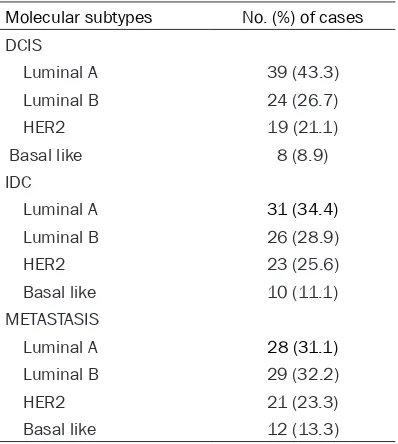Original Article Changes in intrinsic subtype of breast cancer during tumor progression in the same patient
Full text
Figure



Related documents
These results indicate that blocking Tim-3 can inhibit the proliferation, migration, and invasion of breast cancer cells and that upregulation of Tim-3 can enhance the
Combined with clini- cal pathological factors, hsa_circ_0000705 expression level was strongly associated with tumor location, tumor stage, Borrmann type, pathologic diagnosis,
PPARγ is correlated with prognosis of epithelial ovarian cancer patients and affects tumor cell progression
age according to four molecular subtypes; very young patients (age less than 35) with HER2- positive, Triple Negative or Luminal B breast cancer had a worse prognosis when compared
In conclusion, this study showed the first evi- dences of the expression and clinical signifi- cance of PBRM1 in breast cancer, suggesting that PBRM1 might involve in
When an adjuvant treatment decision is taken for triple-negative or HER-2-positive small breast cancer patients, prognosis-related factors should also be evalu- ated, such as
We examined the association between indicators of mammographic density and breast cancer risk by tumor subtype among postmenopausal women by investigating heterogeneity across
We aim to characterize factors that are modified: 1) in tumor and non tumor human breast epithelial cell lines when incubated with conditioned media (CMs) from human breast